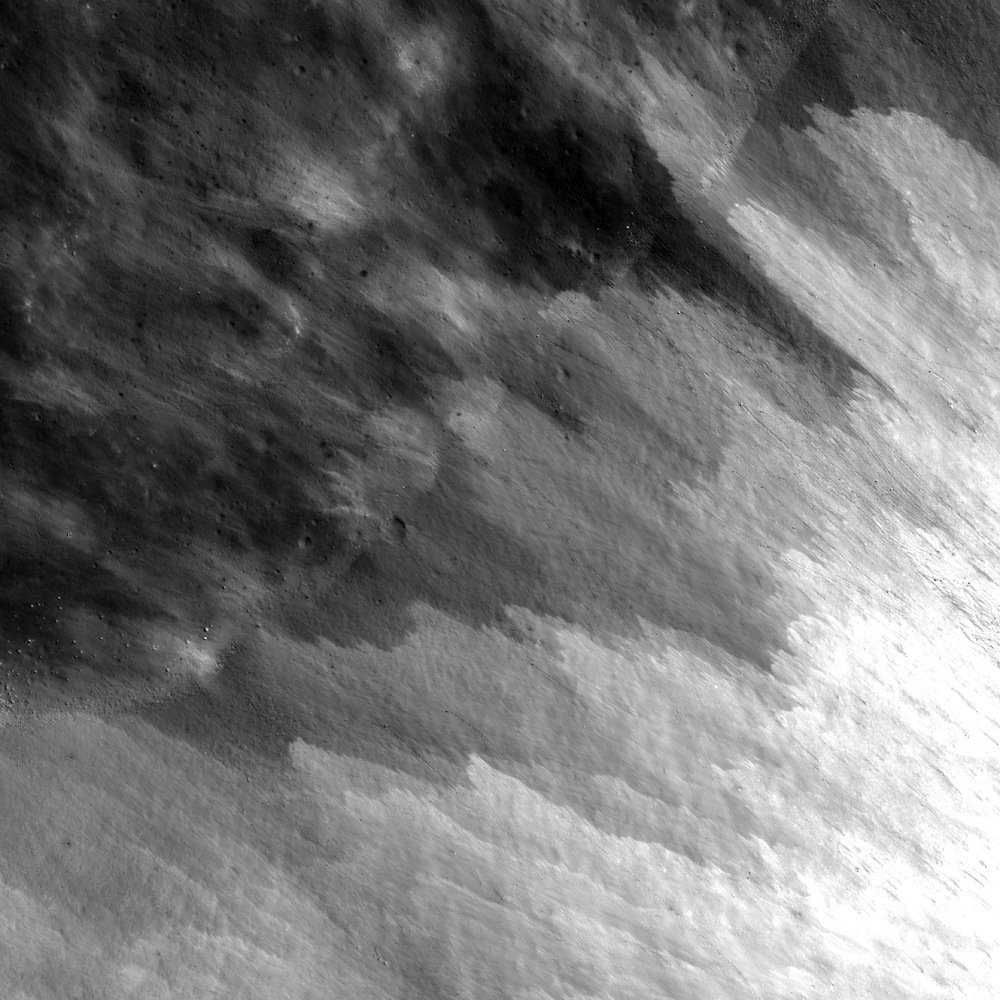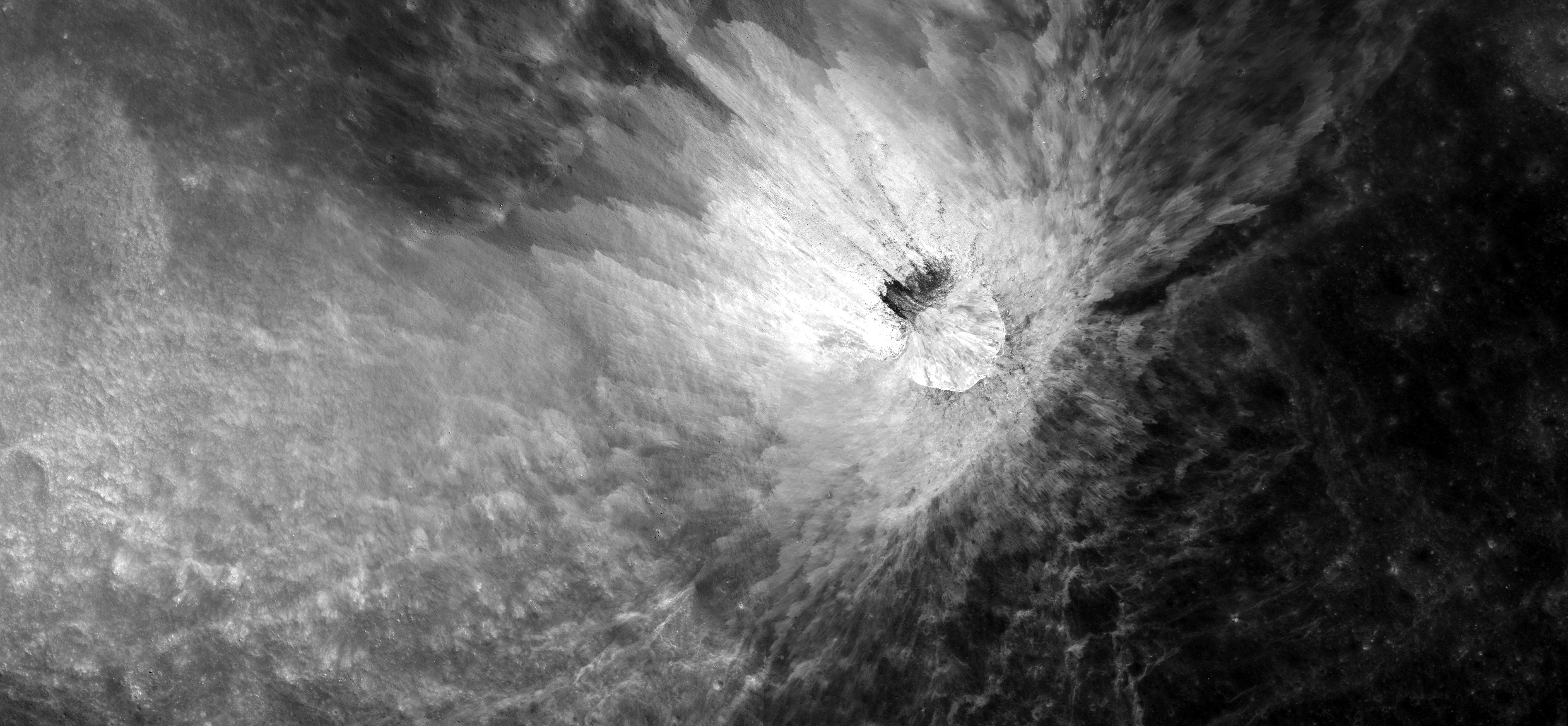
Today's Featured Image (FI) shows a small portion of the ejecta blanket of an unnamed fresh impact crater (1 km diameter) located on the southeastern wall of crater Darwin C (15 km diameter, over 2500 m deep!). The linear reflectance boundary that runs diagonally from lower left to upper right is a break in slope between the steep wall (lower right) and floor (upper left) of Darwin C crater; to the left of that line the floor is essentially flat.
Exposure to space weathering tends to lower the albedo of surface materials on an airless body like the Moon. But compositional differences also affect the reflectance of surface materials. So how can we tell whether the ejecta deposits in today's FI have higher reflectance due to freshness or composition? It helps to look at the parent crater from where the ejecta was delivered. If we look at the context image below, we can see that it is very blocky. This is another clue that the crater is young; the blocks have not been worn down by micrometeorite bombardment. Also, with time, gravity and other disturbances, such as ground shaking from other impacts, pull material down the walls of a crater. But we see that the crater walls are crisp; they have not begun to slump even though this crater formed on an incline. All of these clues let us confidently assume that this is a fresh (young) crater that has not been exposed to the space environment or gravity for very long.
The fresh crater is centered at 20.09°S latitude and -70.67°E longitude, and is approximately 1 km in diameter, about the size of Meteor crater, Arizona. Darwin C is located at 20.51°S latitude and -71.12°E longitude, and is approximately 16 km in diameter.
Check out today's Featured Image at full resolution below, and explore the whole region using LROC's QuickMAP.
Related Posts:
Ejecta sweeps the surface
It Is All Downhill From Here
Bright and Dark Ejecta
Beautiful Ejecta Patterns
Slumping rim of Darwin C
Published by Raquel Nuno on 21 November 2013
